Metal screen protects this Bengaluru home by Kumar La Noce
Kumar La Noce designs JP House, a metal screen-clad, multigenerational home in Bengaluru, India
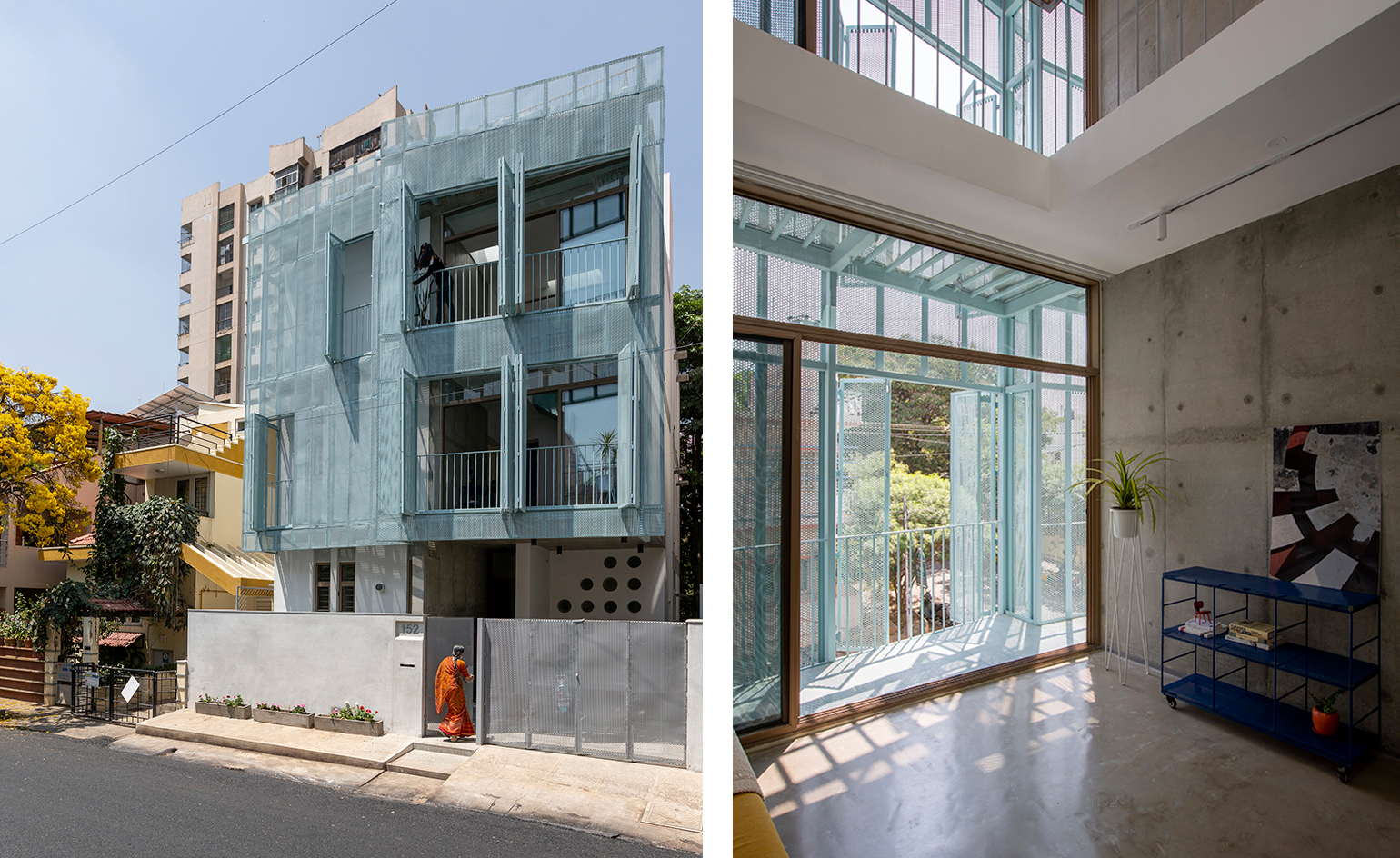
Vivek Muthuramalingam - Photography
This metal screen-clad, multigenerational family home in Bengaluru, Karnataka, offers airy, functional and contemporary accomodation for an illustrator, their family unit and parents. JP House comprises two interconnected apartments; the uppermost hosts the client's unit, while the lower space is reserved for the grandparents. Designed by locally based architecture studio Kumar La Noce, the new-build house balances family warmth and a clean, almost industrial aesthetic infused with a minimalist architecture feel inside.
Kumar La Noce, headed by Bhavana Kumar and Nicola La Noce, crafted a three-storey building to best cater to the extended family’s needs. The modern structure is unified by a light blue perforated ‘veil’ on the street side – a delicate and playful metal screen. Yet this element is not simply an aesthetic gesture. Its permeable nature helps regulate the heat, air and sunlight that flows into the interior, ensuring comfortable conditions for the residents.
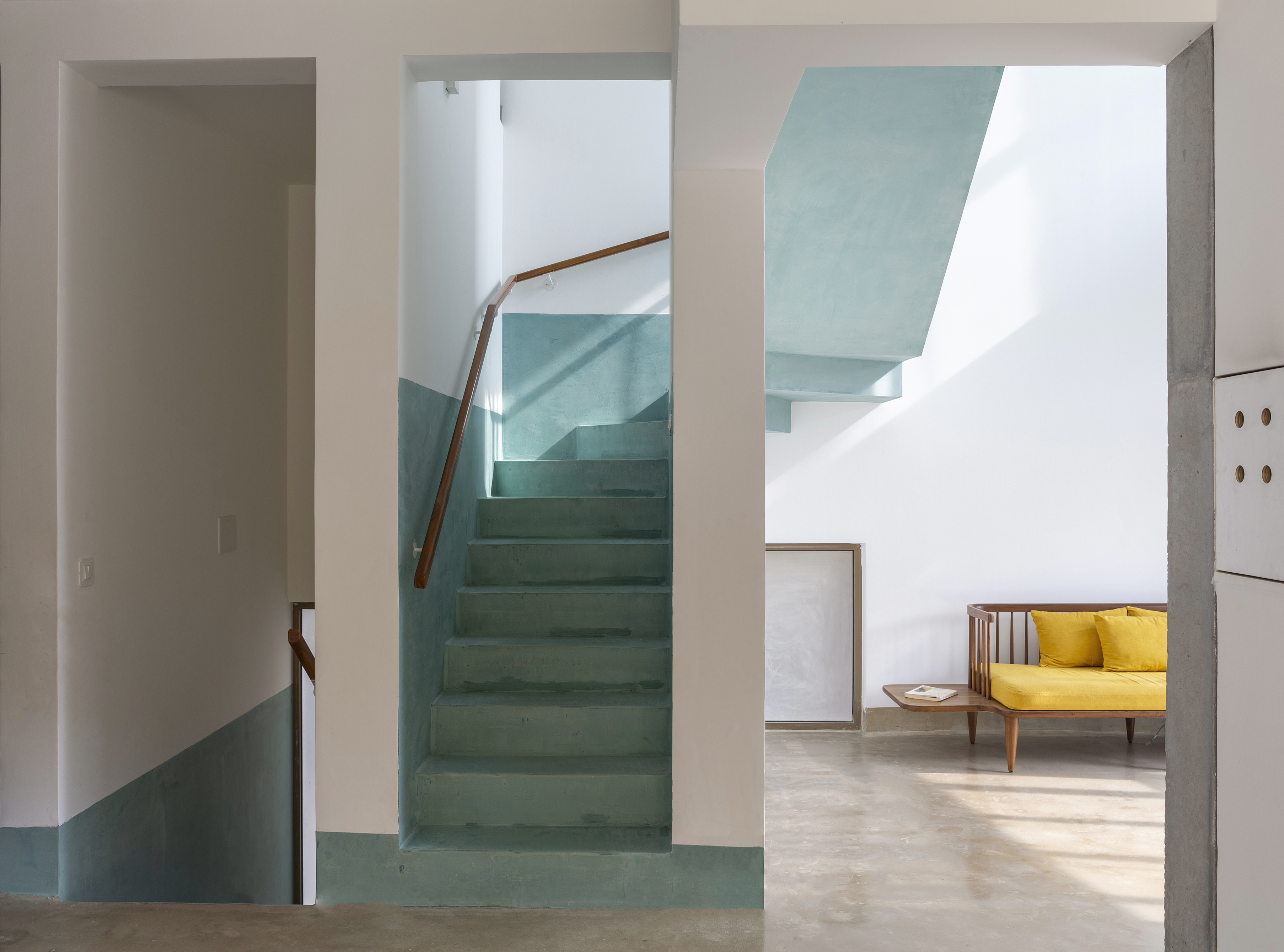
Stepping indoors, a clean interior exudes confidence, in an overall hardwearing, utilitarian atmosphere. The material palette is composed of white walls, polished cement and a handful of carefully chosen, bespoke wooden details. A green painted master staircase matches the external skin tone and provides a pop of colour, alongside strategic, bright furniture pieces.
Inside and outside merge behind the metal façade through open-air yet protected balconies that run along the front, which also allow for close appreciation of this key architectural feature. ‘The perforated metal façade is envisioned as a “filigree”; it incorporates simple but sophisticated detailing to retain lightness, while using readily available metal sections,’ the architects explain. ‘The custom screen system was realised through a close collaboration with a fabricator, who has a passion for detail in metal working. An exercise in balancing performance with minimal, essential and rugged detailing, craft plays a role here as much as engineering.’
Balancing Bengaluru’s hot climate, neighbours’ views and a tight urban site, JP House’s design is simple, yet effective, offering spatial luxury through smart architecture and relatively inexpensive materials.


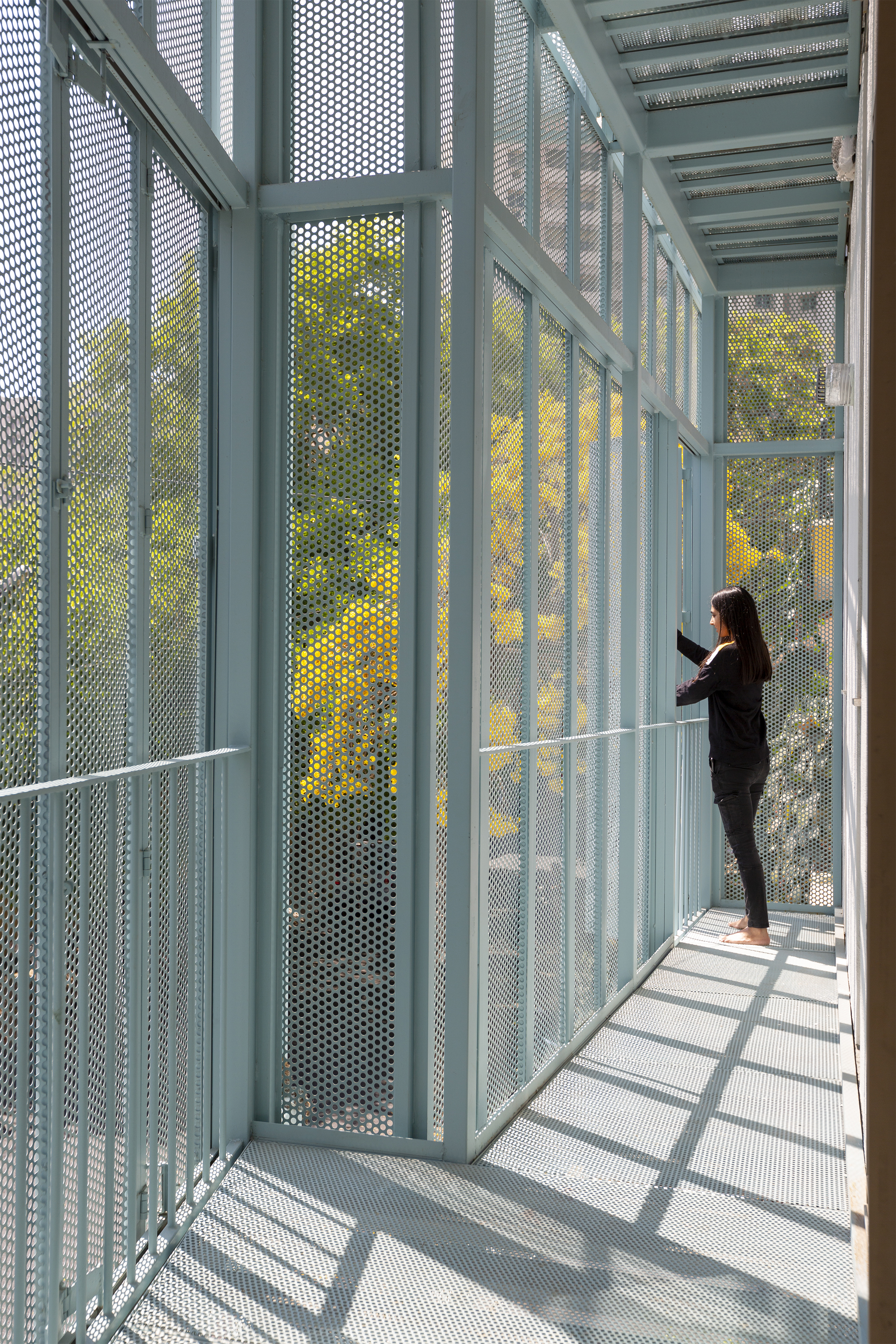
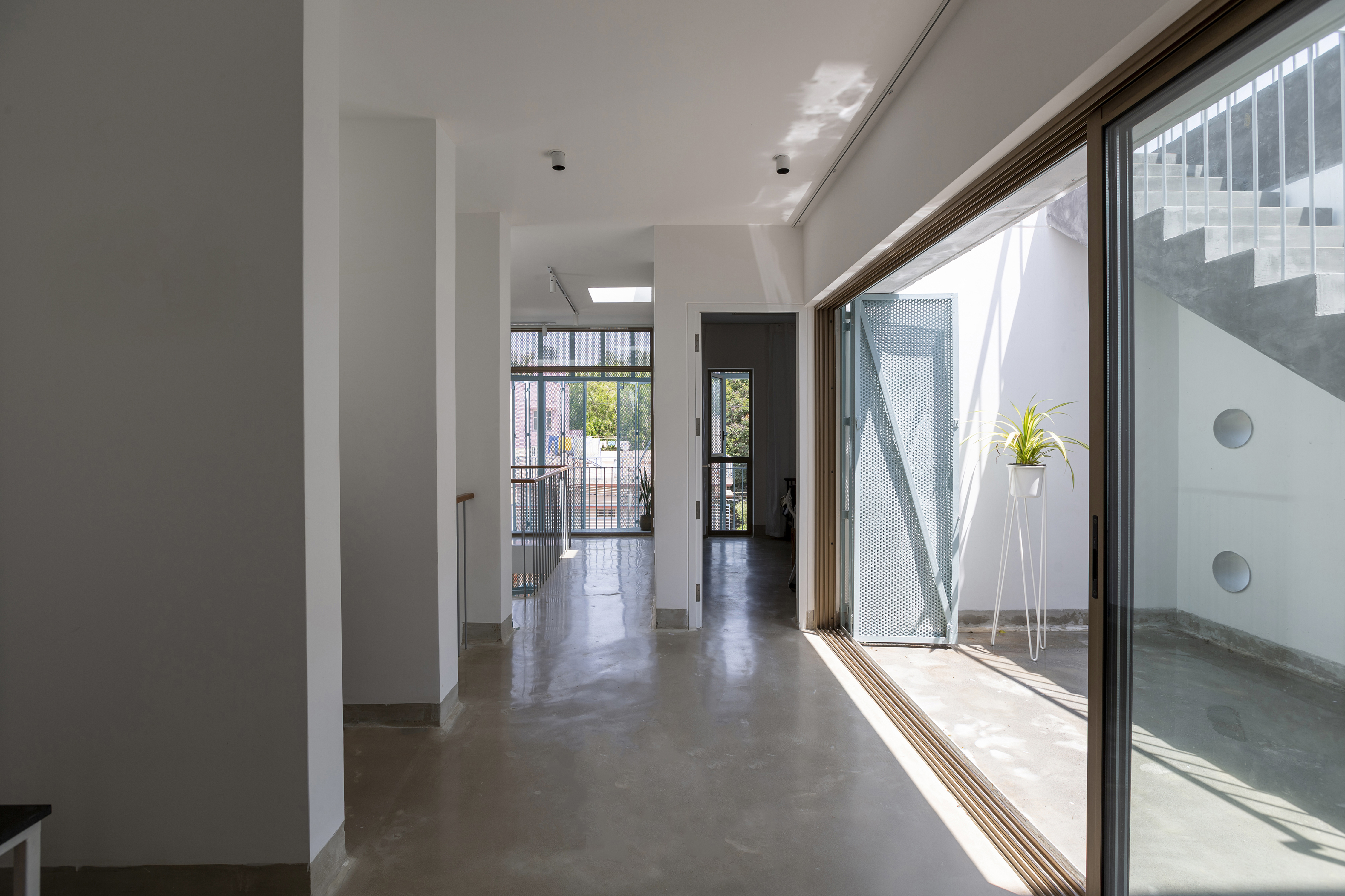

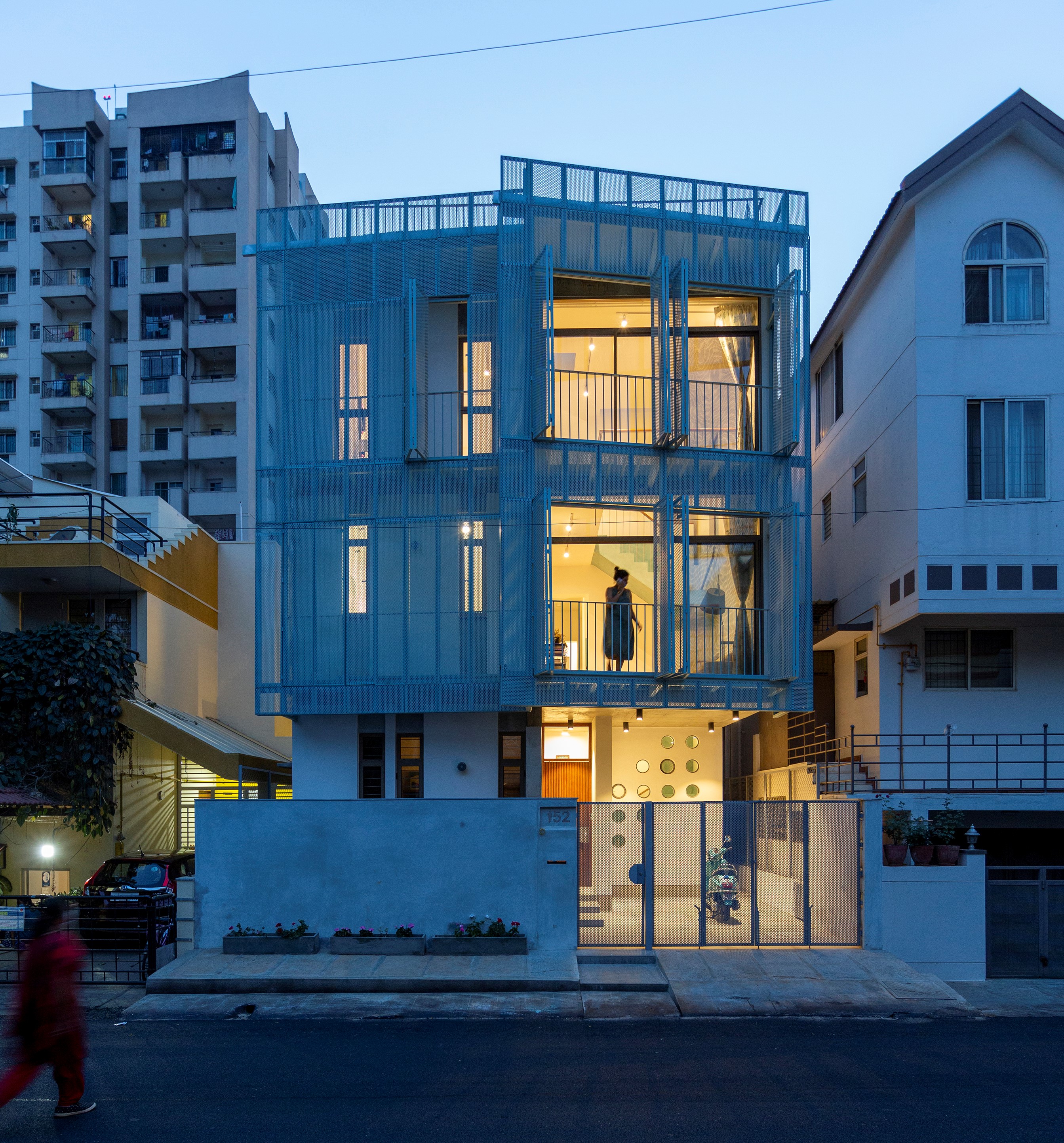
INFORMATION
Receive our daily digest of inspiration, escapism and design stories from around the world direct to your inbox.
Ellie Stathaki is the Architecture & Environment Director at Wallpaper*. She trained as an architect at the Aristotle University of Thessaloniki in Greece and studied architectural history at the Bartlett in London. Now an established journalist, she has been a member of the Wallpaper* team since 2006, visiting buildings across the globe and interviewing leading architects such as Tadao Ando and Rem Koolhaas. Ellie has also taken part in judging panels, moderated events, curated shows and contributed in books, such as The Contemporary House (Thames & Hudson, 2018), Glenn Sestig Architecture Diary (2020) and House London (2022).
-
 A former agricultural building is transformed into a minimal rural home by Bindloss Dawes
A former agricultural building is transformed into a minimal rural home by Bindloss DawesZero-carbon design meets adaptive re-use in the Tractor Shed, a stripped-back house in a country village by Somerset architects Bindloss Dawes
-
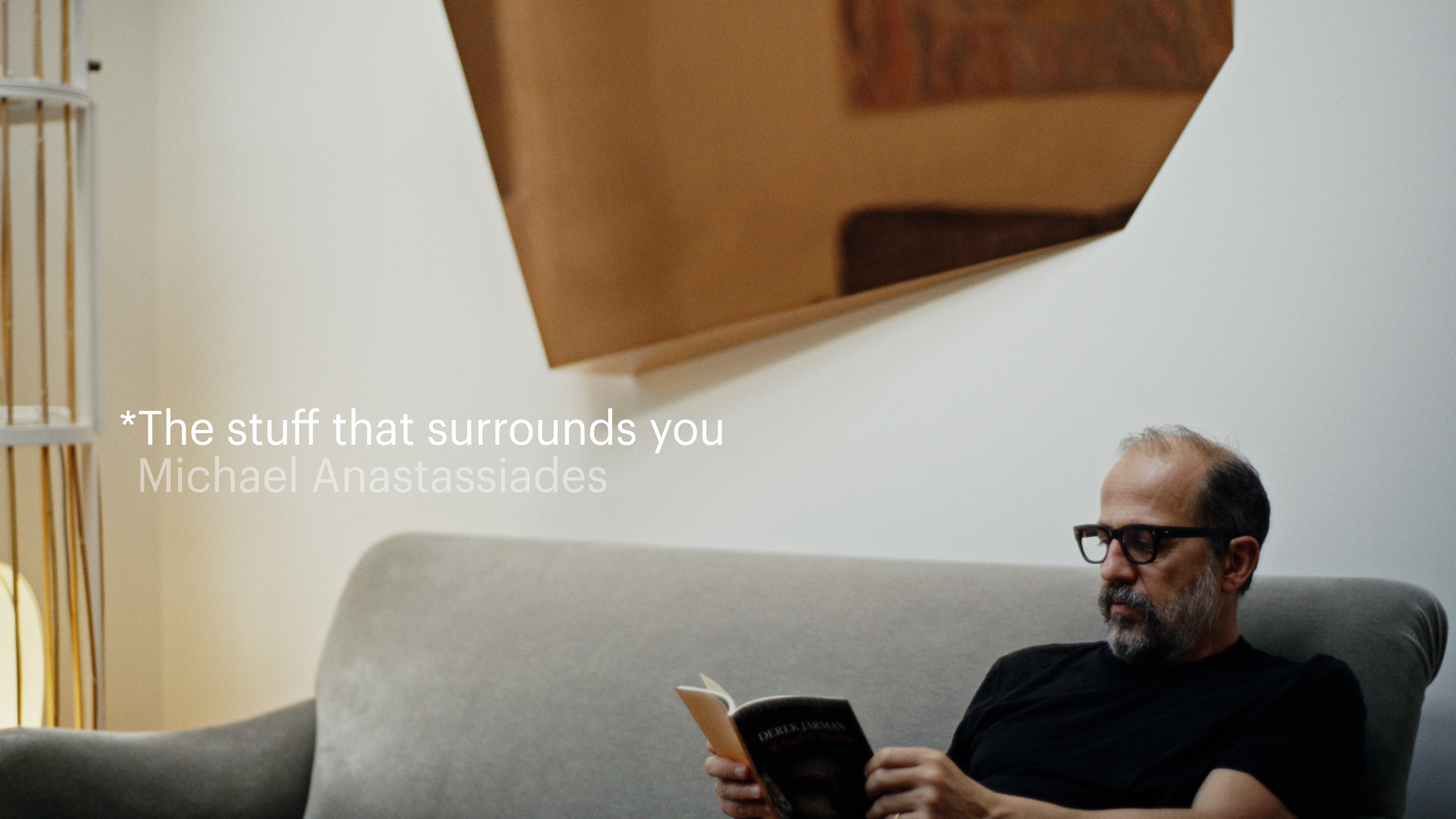 The Stuff That Surrounds You: Inside the home of designer Michael Anastassiades
The Stuff That Surrounds You: Inside the home of designer Michael AnastassiadesIn The Stuff That Surrounds You, Wallpaper* explores a life through objects. In this episode, we step inside one of the most considered homes we've ever seen, where Anastassiades test drives his own creations
-
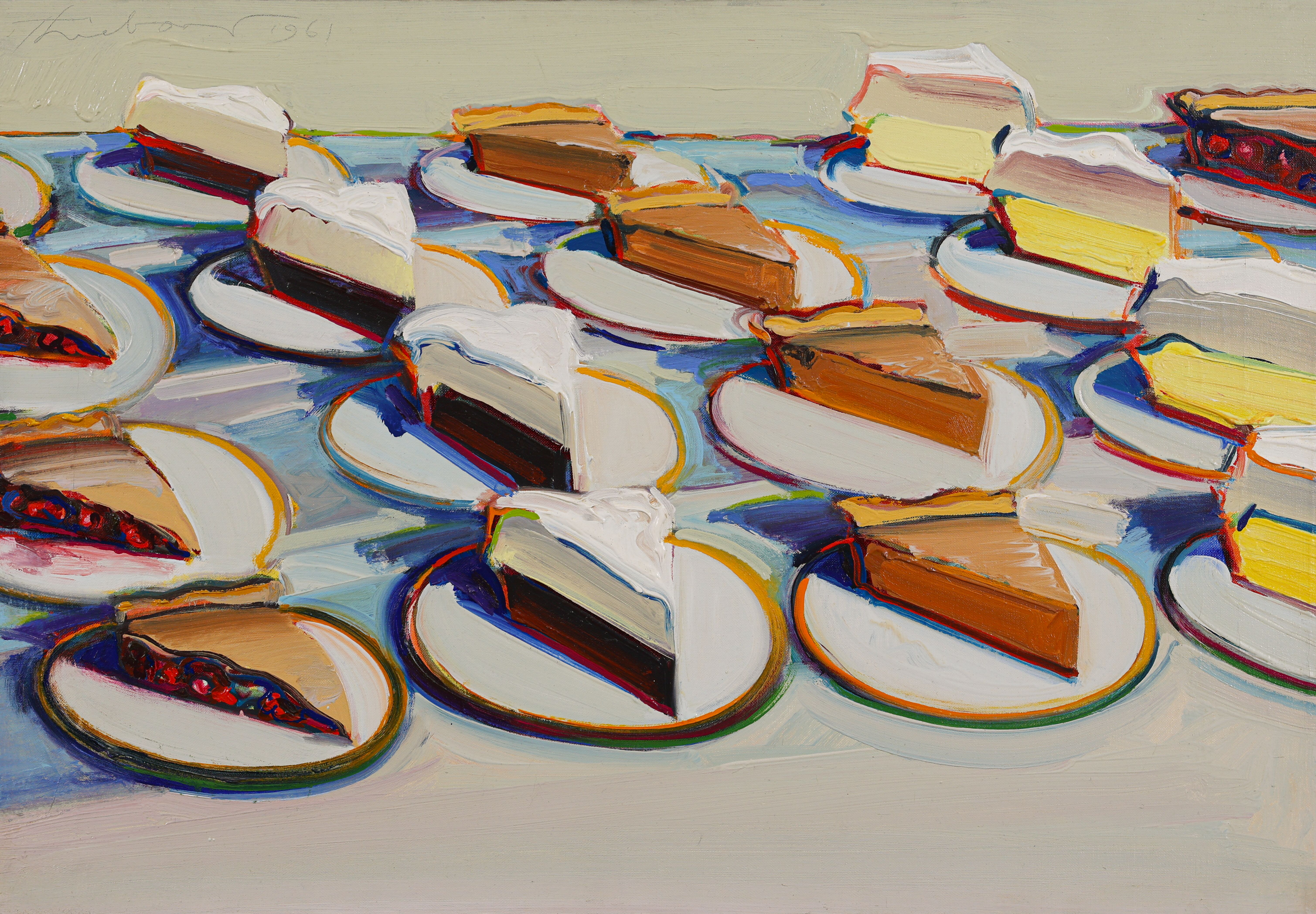 Why are Wayne Thiebaud’s paintings at the Courtauld so tempting?
Why are Wayne Thiebaud’s paintings at the Courtauld so tempting?The American artist’s thickly painted slices of cake at the Courtauld are some of our favourite artworks seen this year. What makes them so special?
-
 The Architecture Edit: Wallpaper’s houses of the month
The Architecture Edit: Wallpaper’s houses of the monthFrom wineries-turned-music studios to fire-resistant holiday homes, these are the properties that have most impressed the Wallpaper* editors this month
-
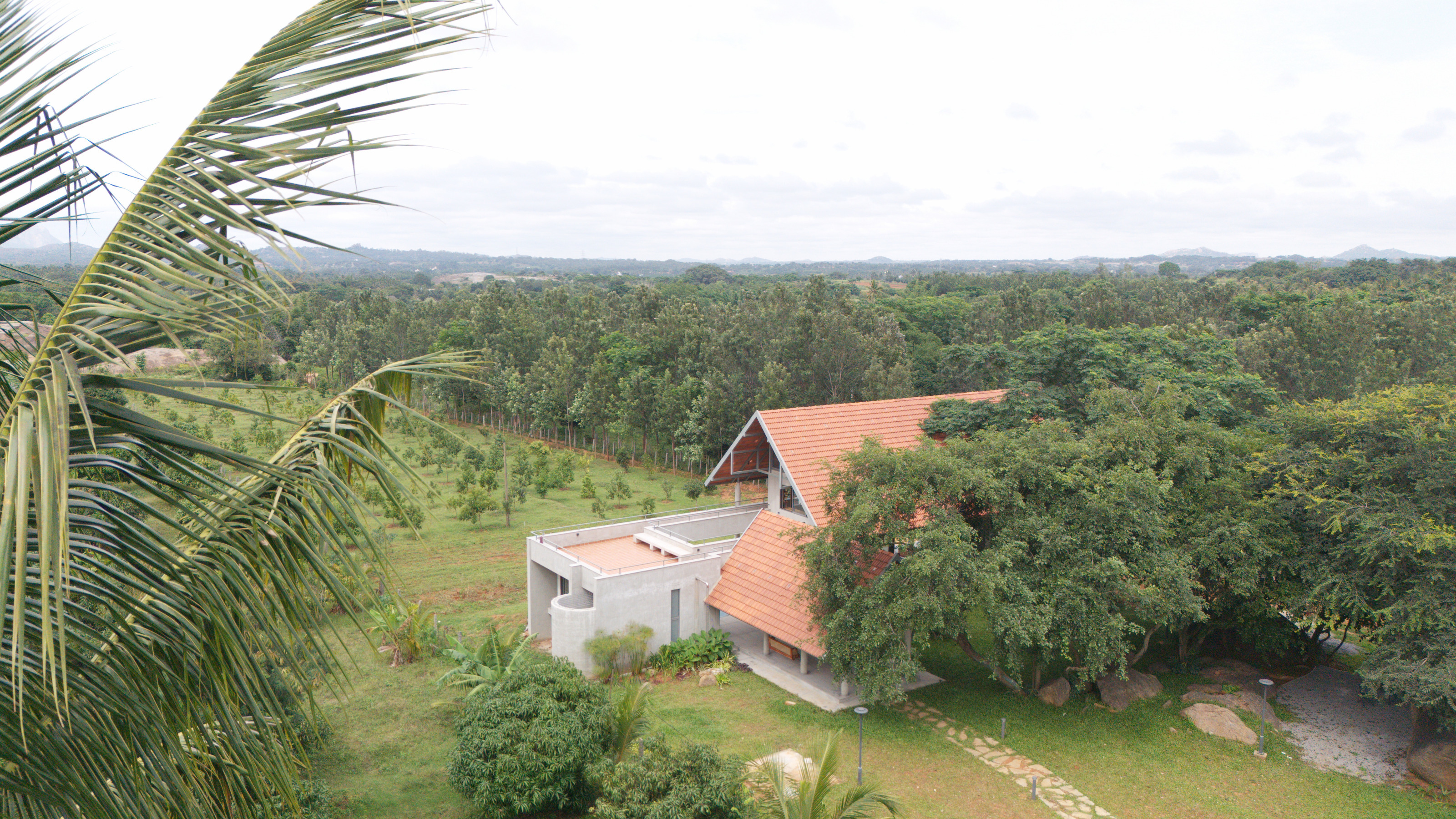 A refined Indian country residence reimagines the farmhouse
A refined Indian country residence reimagines the farmhouseSet among Karnataka’s rolling fields and forest, House by the Grove by Taliesyn Design & Architecture combines modern materials with an open approach to the elements
-
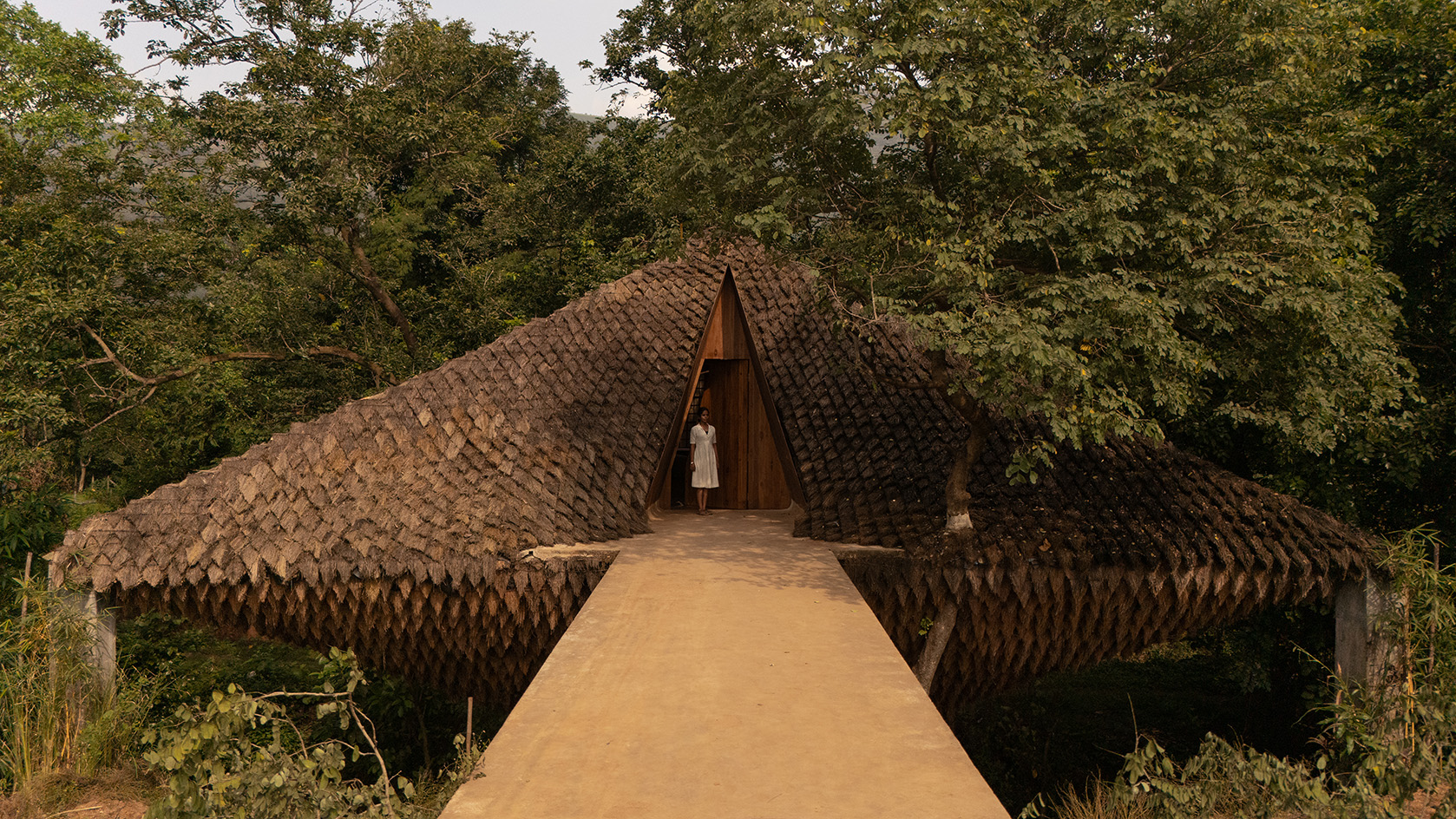 Half bridge, half home: Wallmakers’ latest project takes architecture to daring new heights
Half bridge, half home: Wallmakers’ latest project takes architecture to daring new heightsHovering above a forest stream in Maharashtra, Bridge House pushes the limits of engineering and eco-conscious design
-
 The Architecture Edit: Wallpaper’s houses of the month
The Architecture Edit: Wallpaper’s houses of the monthFrom Malibu beach pads to cosy cabins blanketed in snow, Wallpaper* has featured some incredible homes this month. We profile our favourites below
-
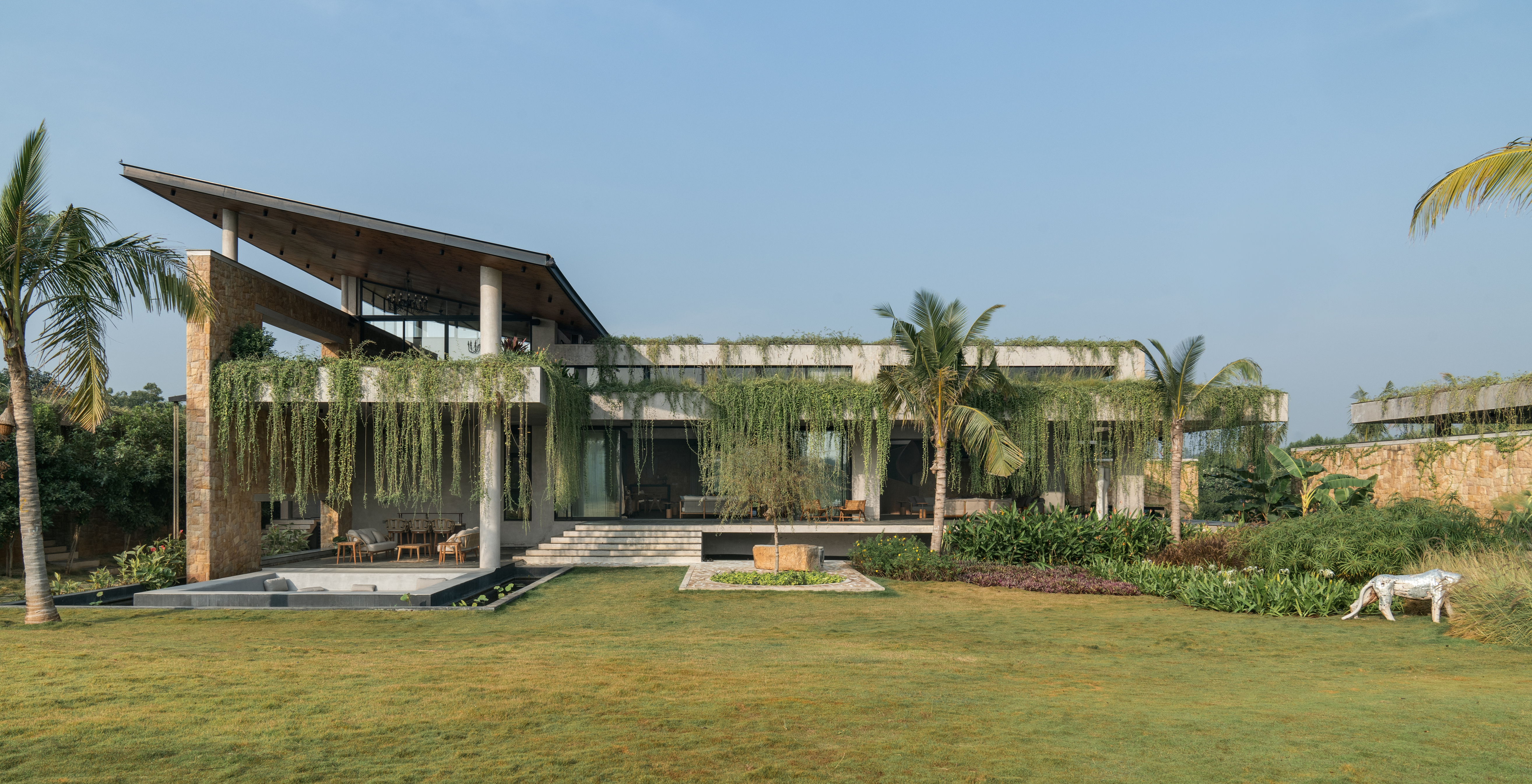 Cascading greenery softens the brutalist façade of this Hyderabad home
Cascading greenery softens the brutalist façade of this Hyderabad homeThe monolithic shell of this home evokes a familiar brutalist narrative, but designer 23 Degrees Design Shift softens the aesthetic by shrouding Antriya in lush planting
-
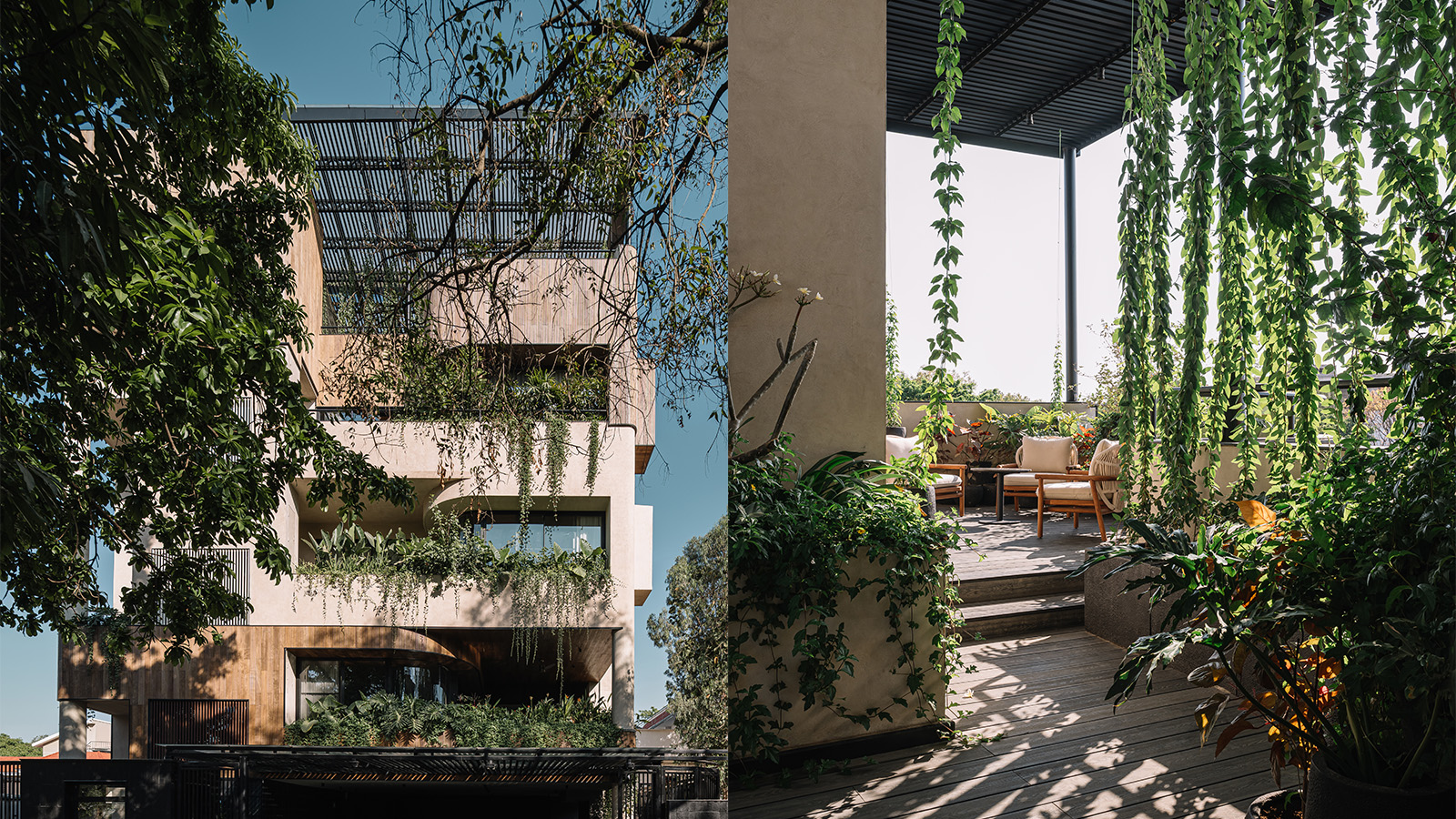 A lush Bengaluru villa is a home that acts as a vessel for nature
A lush Bengaluru villa is a home that acts as a vessel for natureWith this new Bengaluru villa, Purple Ink Studio wanted gardens tucked into the fabric of the home within this urban residence in India's 'Garden City'
-
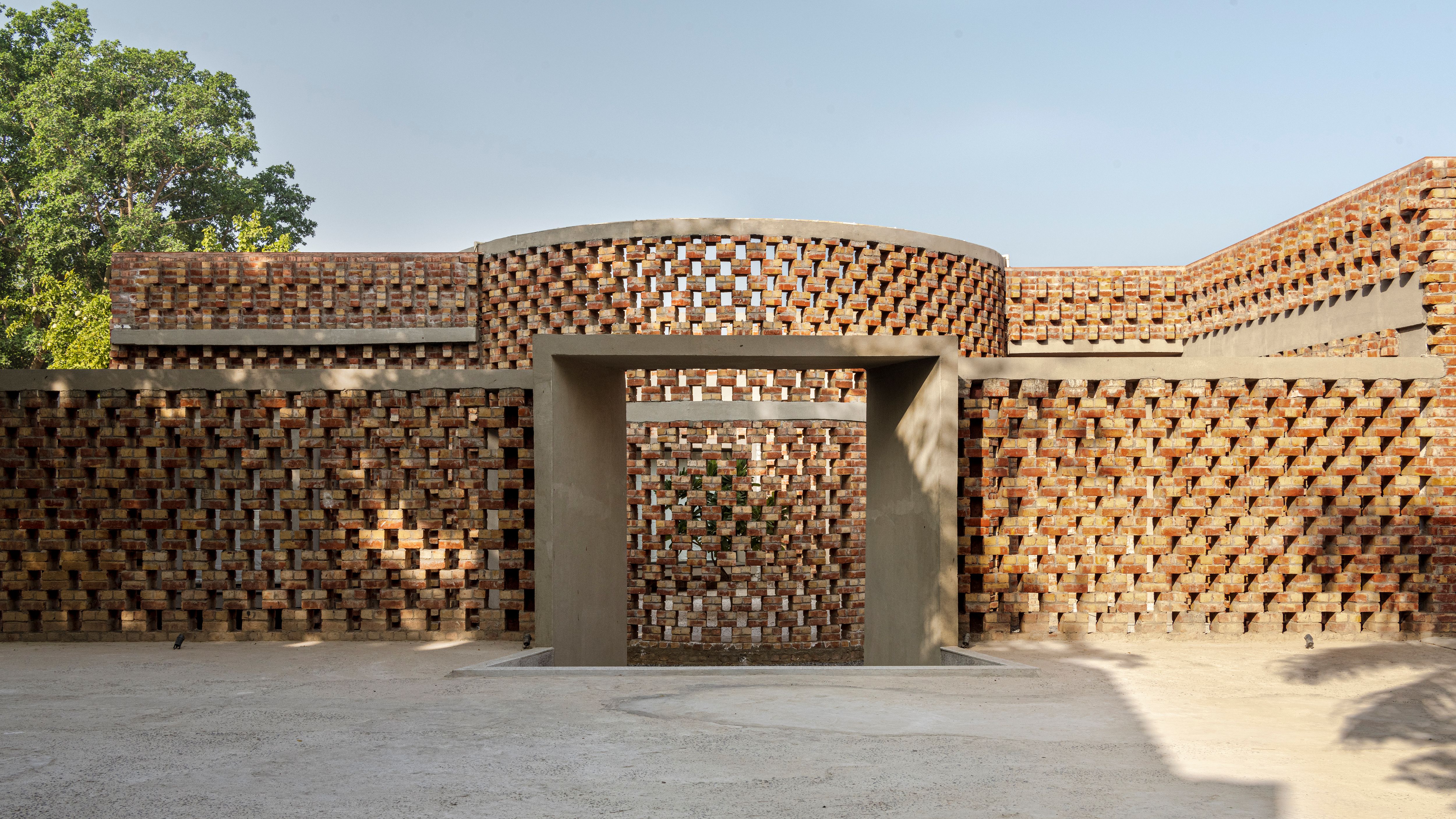 Brick by brick, a New Delhi home honours India’s craft traditions
Brick by brick, a New Delhi home honours India’s craft traditionsRLDA Studio's Brick House works with the building block's expressive potential to create a dynamic residence with a façade that reveals patterns that change with the sun and shadows
-
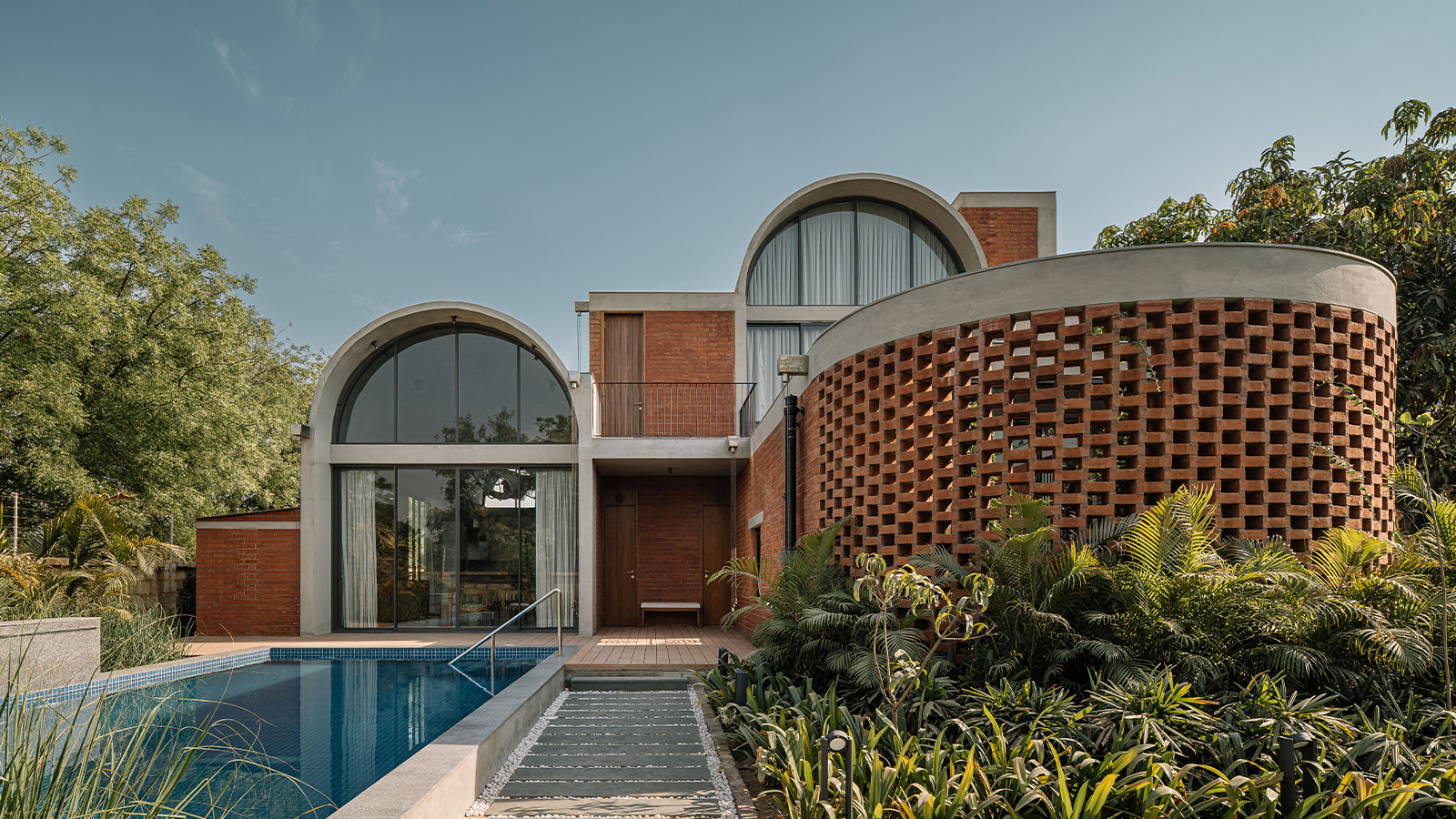 Surrounded by mango trees and frangipani, an Ahmedabad home is a soothing sanctuary
Surrounded by mango trees and frangipani, an Ahmedabad home is a soothing sanctuaryAhmedabad home Teen Vaults, designed by Vaissnavi Shukl, is a family residence grounded in materiality and bold architectural language